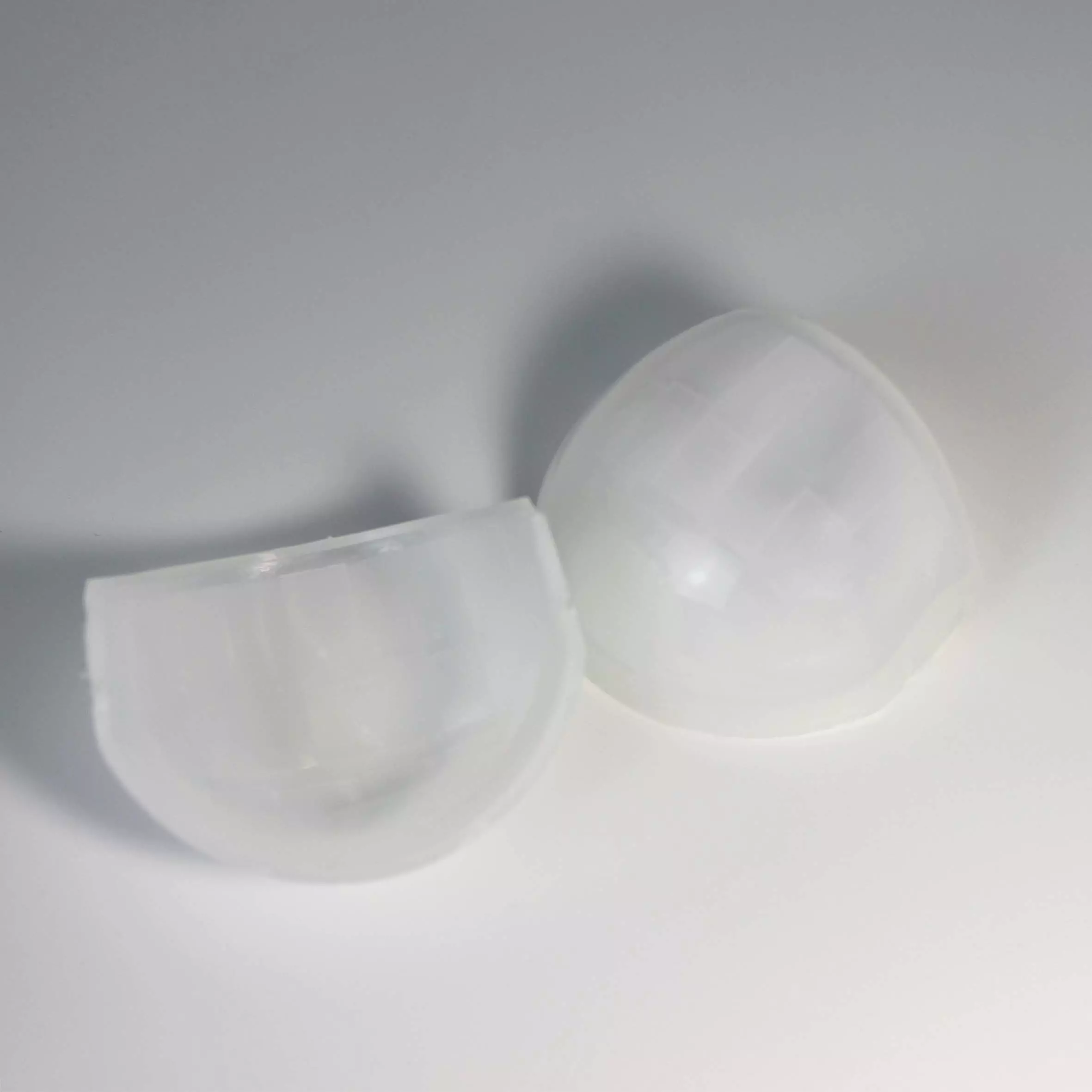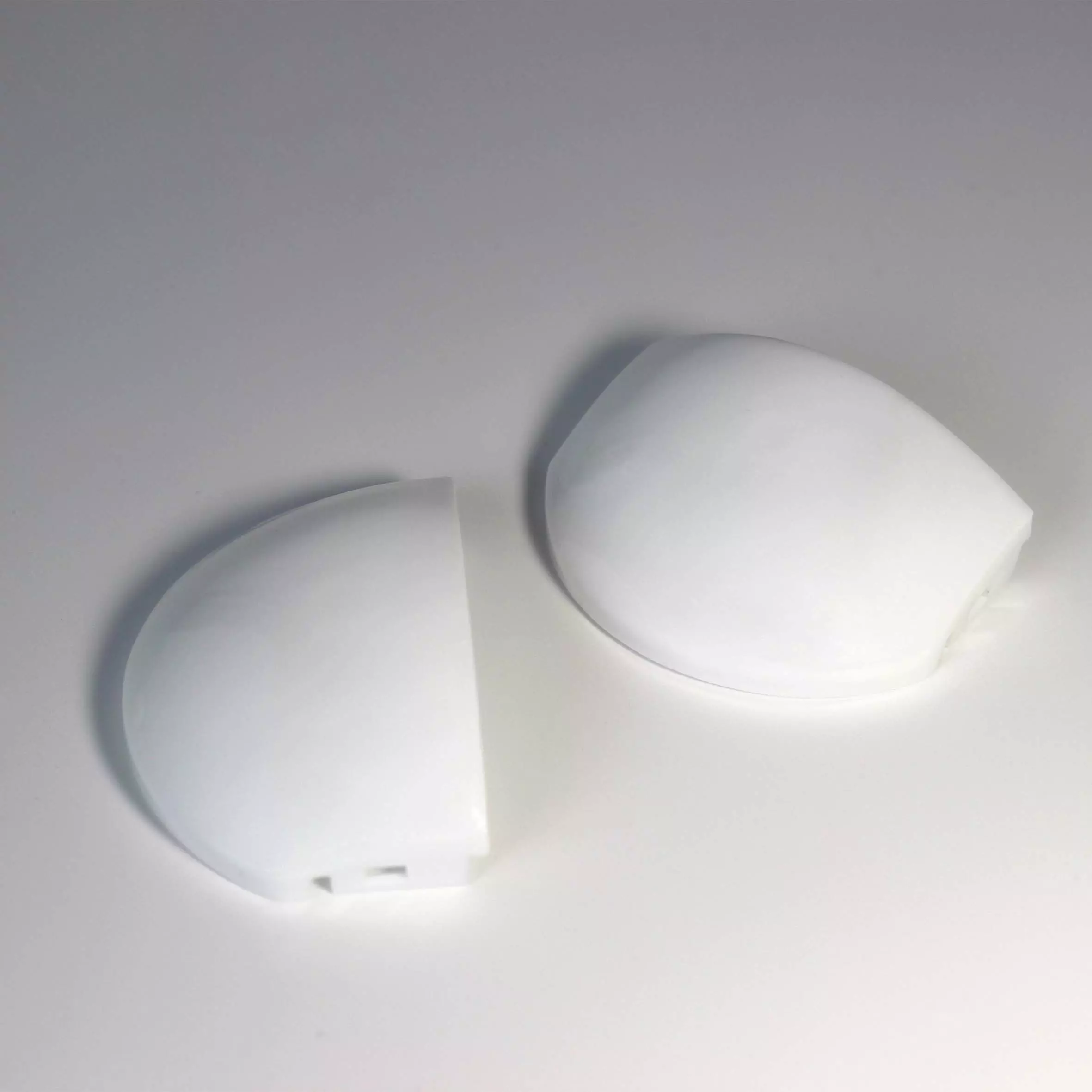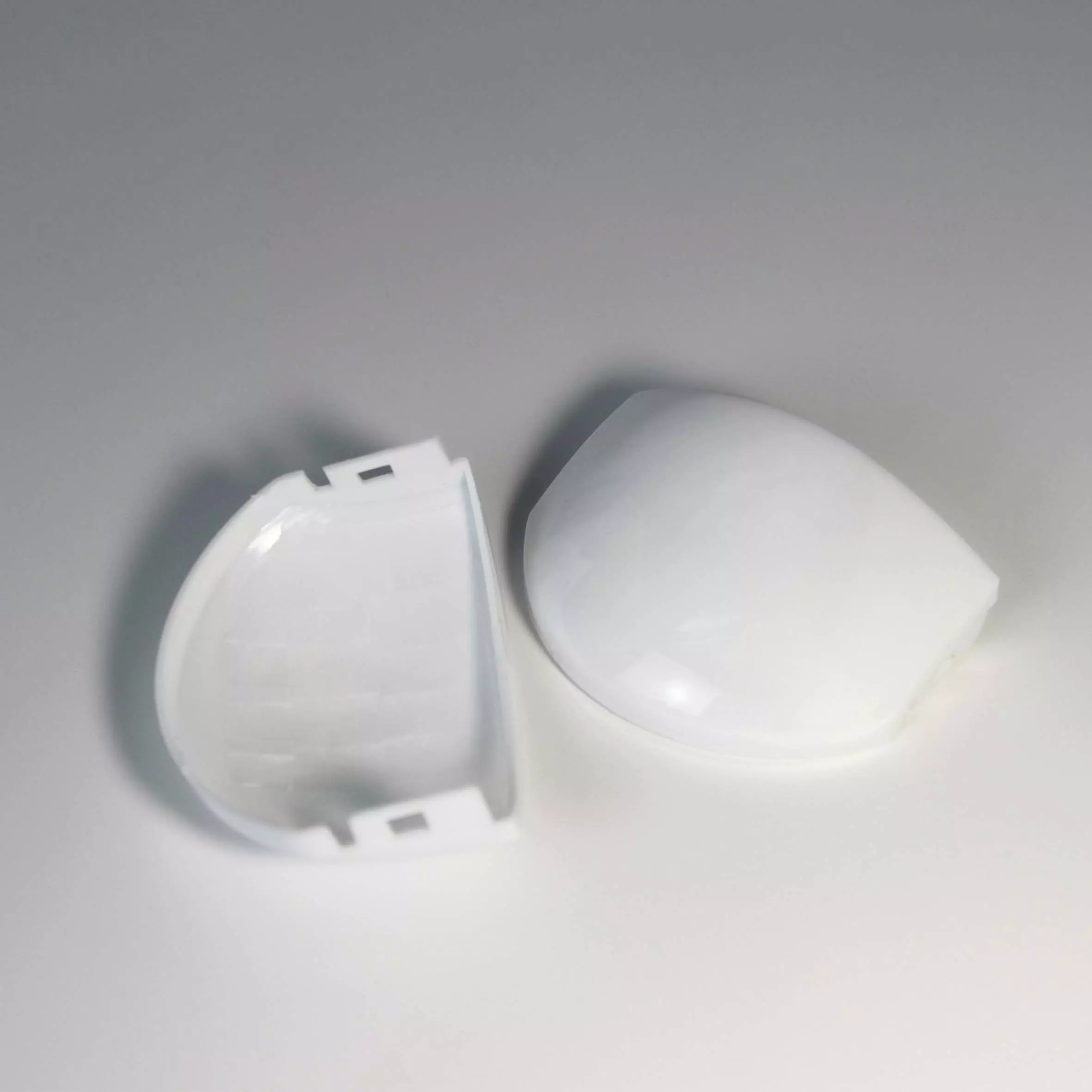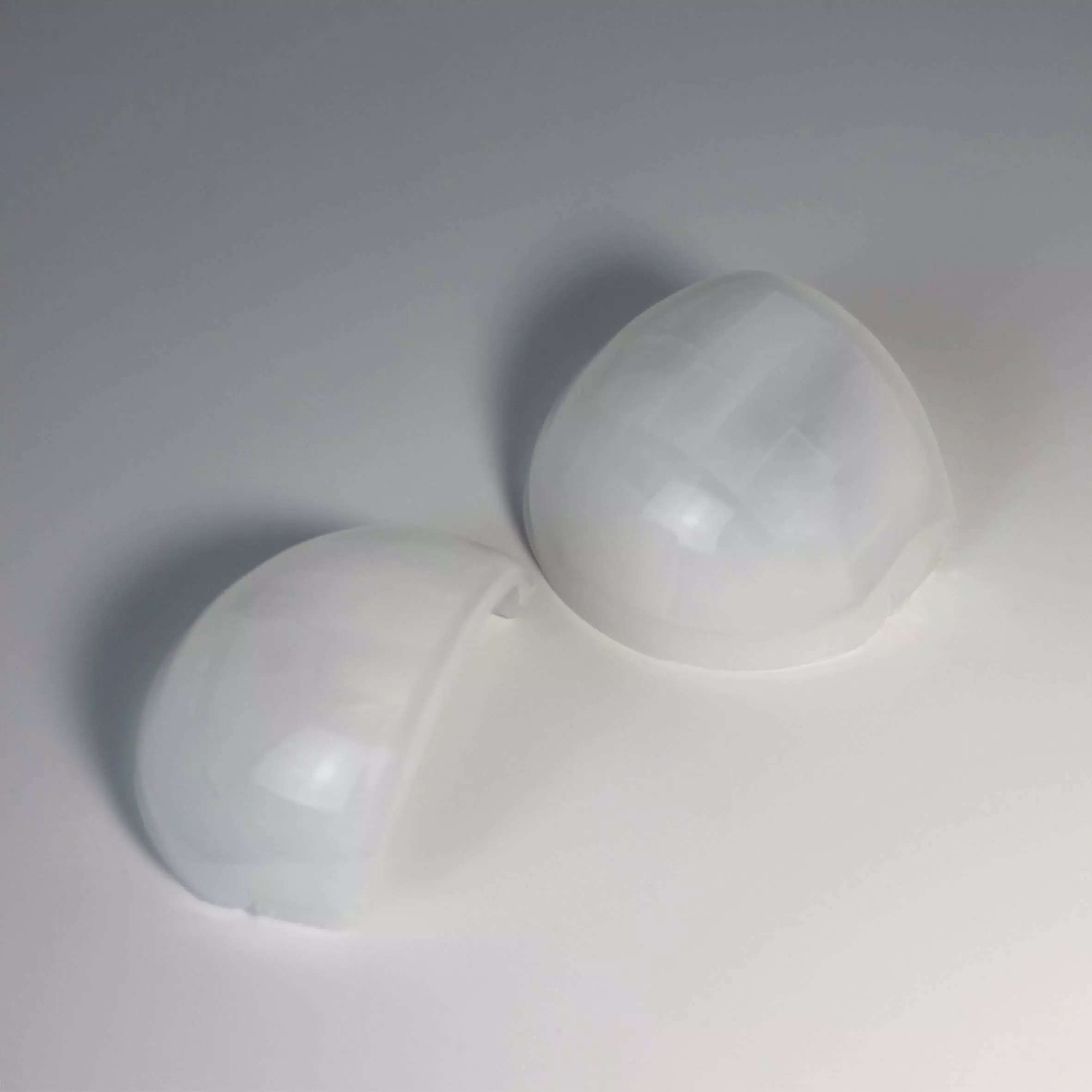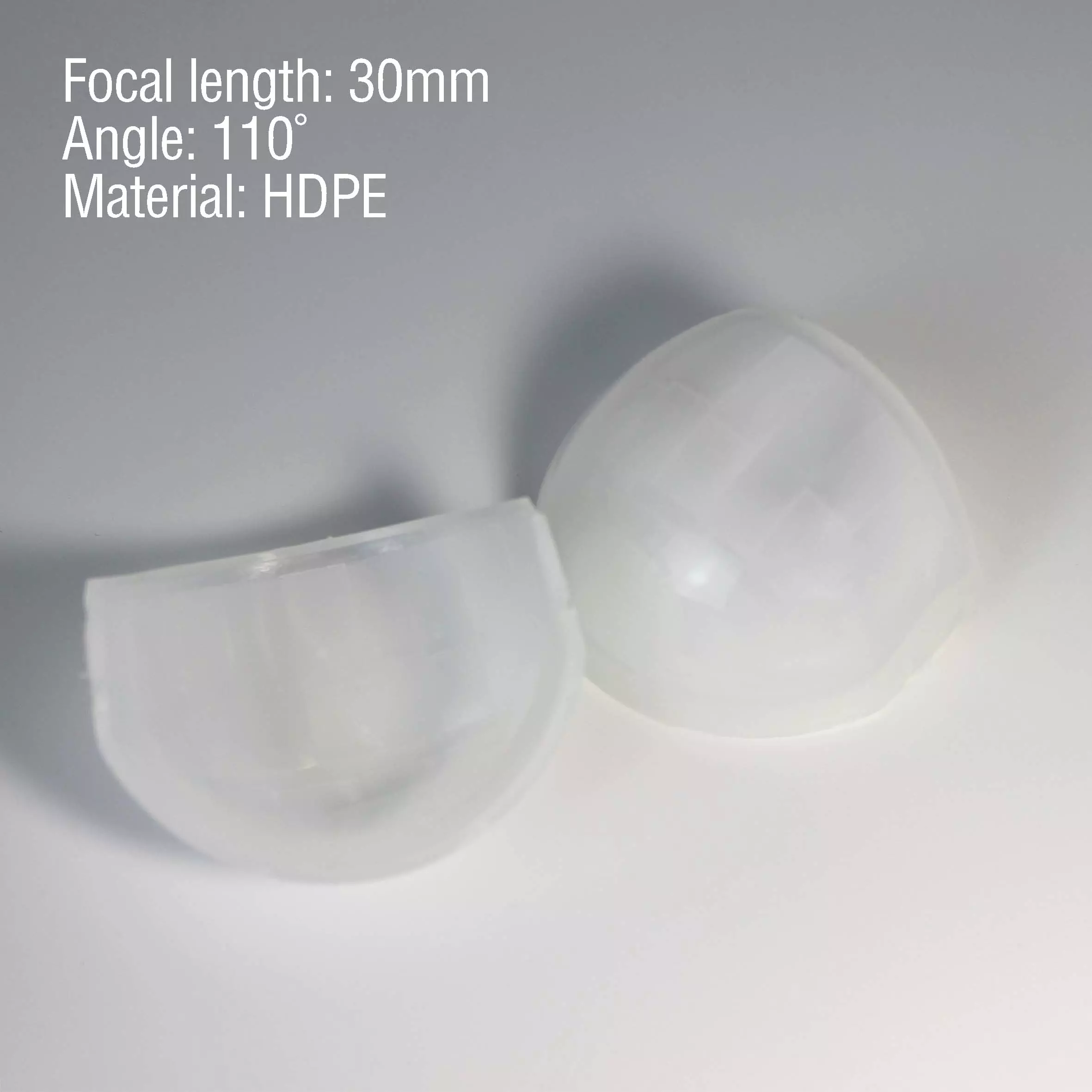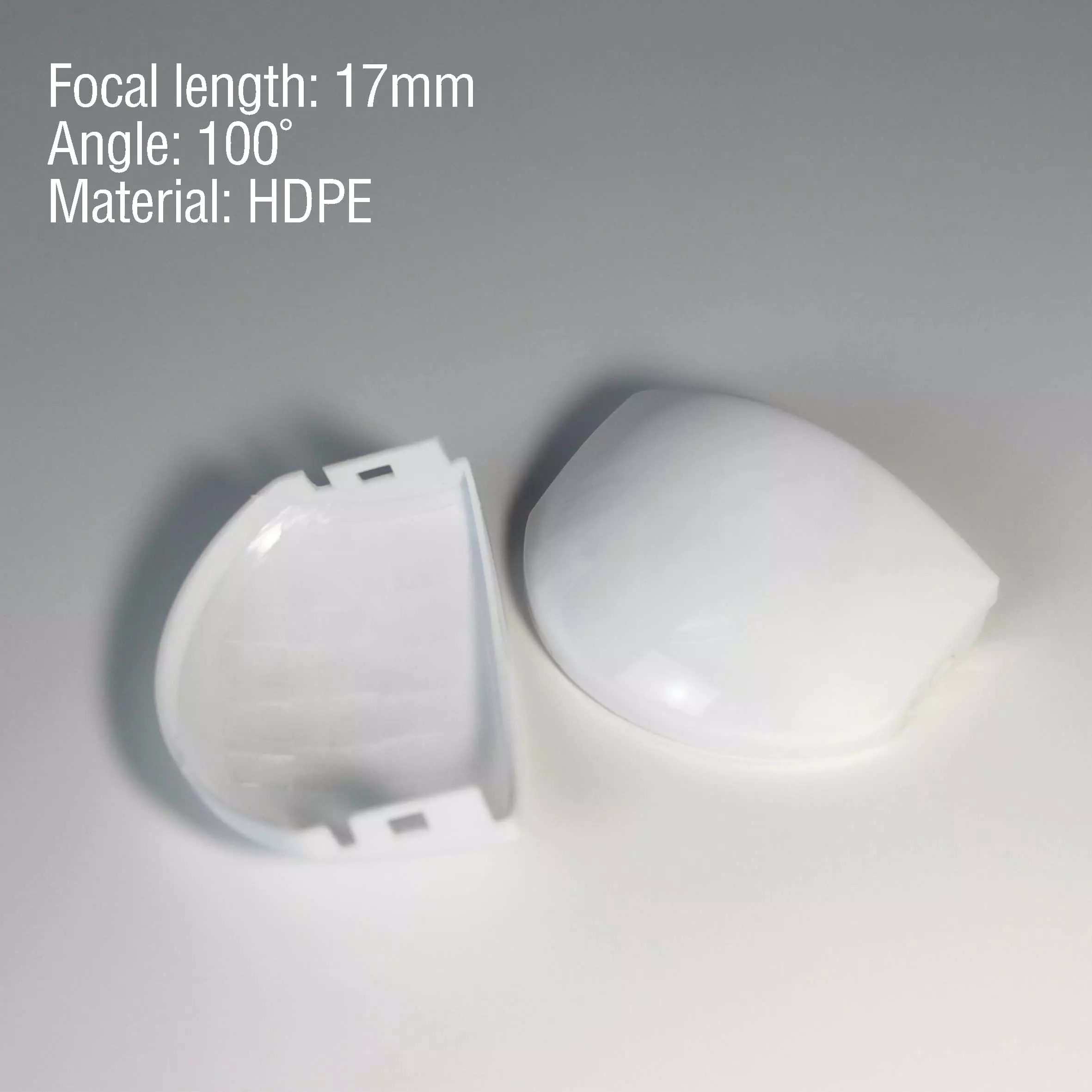PMMA PIR Fresnel Lens
Dimension: D15mm * T2mm * H7.5mm
Surface Accuracy: As requested
Size Tolerance: +/-0.1mm
Angle Tolerance: N/A
Coating: No
Fresnel lenses according to your requirements.Fresnel lens is a compact lens originally developed by French physicist Augustin-Jean Fresnel for the lighthouse.Fresnel lens is composed of a series of concentric rings. Compared with traditional lens, Fresnel lens reduces the amount of material required by dividing the lens into a group of concentric annular parts.It is used for light collection, light collimation, amplification etc.
What is a Fresnel lenses used for?
Fresnel lens, succession of concentric rings, each consisting of an element of a simple lens, assembled in proper relationship on a flat surface to provide a short focal length. The Fresnel lens is used particularly in lighthouses and searchlights to concentrate the light into a relatively narrow beam
How are Optical Fresnel lenses made?
The basic idea behind a Fresnel lens is simple. Imagine taking a plastic magnifying glass lens and slicing it into a hundred concentric rings (like the rings of a tree). Each ring is slightly thinner than the next and focuses the light toward the center. … Large Fresnel lenses are often used as solar concentrators.
What can I do with a Fresnel lenses?
Since plastic Fresnel lenses can be made larger than glass lenses, as well as being much cheaper and lighter, they are used in industrial applications to concentrate sunlight for heating in solar cookers, in solar forges, and in solar collectors used to heat water for domestic use.
What is the difference between glass and plastic Fresnel lenses?
Since plastic Fresnel lenses can be made larger than glass lenses, as well as being much cheaper and lighter, they are used to concentrate sunlight for heating in solar cookers, in solar forges, and in solar collectors used to heat water for domestic use.
Picture of Optics PMMA PIR Fresnel Lens

Specificaitons of customized large size fresnel lens
| Specification | Data |
| Material | PMMA HDPE |
| Focal Length | 22mm |
People also ask
- Are glass lens better than plastic?
Glass is much more scratch resistant than plastic, making the glasses last longer. Plastic lenses are less reflective than glass lenses, making them clearer and less prone to glare. Glass lenses generally have a higher index than plastic lenses, making them slightly thinner and more attractive looking.
- Are Fresnel lenses still used?
The Fresnel lens, invented by Augustin-Jean Fresnel, helped do that by capturing all the light coming from a lamp, then magnifying and steering it in one direction. Suddenly, lighthouses became more useful and shipwrecks diminished. Fresnel lenses are still in operation today.
- Do all TVS have a Fresnel lens?
No LCD televisions have Fresnel lenses. Only projection televisions do. I removed the lens and used it for burning and melting mounted on a pivoting frame. It is brutal at full sunlight.
- How bright is a Fresnel lens?
Unlike earlier reflector-based optics that utilized only 50% of the light produced by their oil lamps, Fresnel lenses could focus nearly 98% of the rays produced by a central light source into a bright beam of concentrated light that could be seen from more than twenty miles out to sea.
- What are the different types of Fresnel lenses?
Cylindrical Fresnel lenses, for example, are designed to focus light in one direction rather than to a point. For solar concentration such as concentration photovoltaic (CPV) on the other hand, Fresnel lenses of reverse configuration are used.
Our Ordering Process
Send us your request with detailed specifications
Receive a commercial offer with terms and costs
After your approval, we handle manufacturing, quality control, and shipping
📦 Shipping
3-5 days in EU, from 10 days to USA
💳 Payment methods
Cash, Bank Transfer, Cards (Visa, Mastercard, Amex, Discover) and PayPal
💬 Questions?
Contact us via WhatsApp, phone, live chat or email
